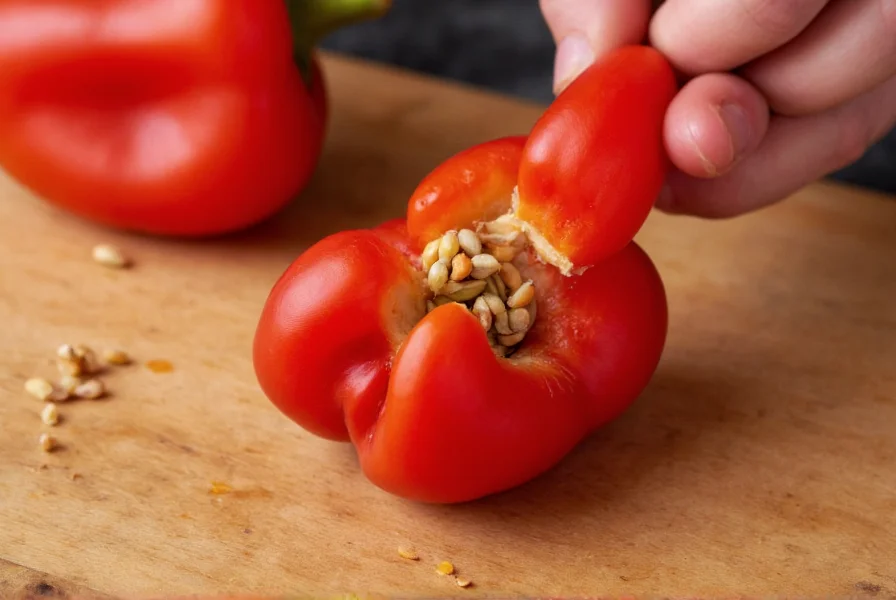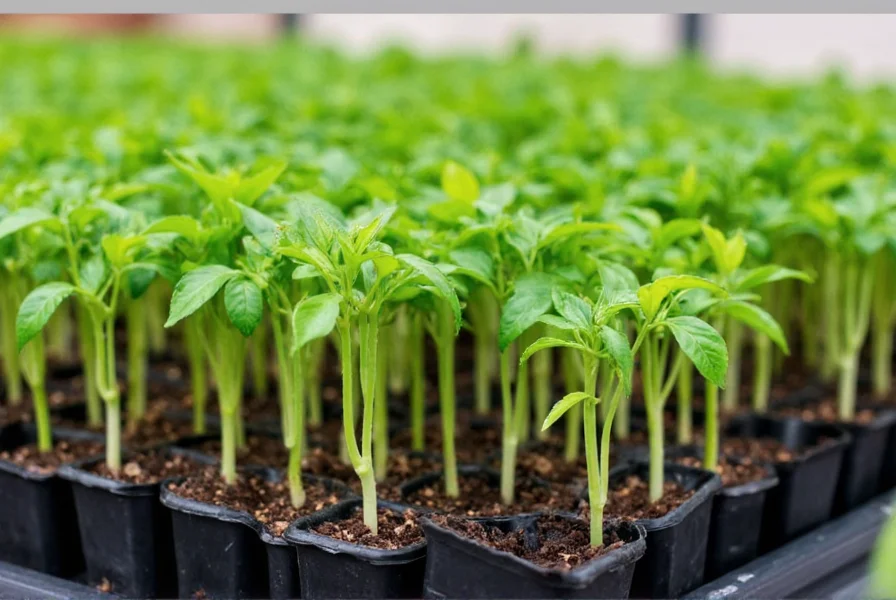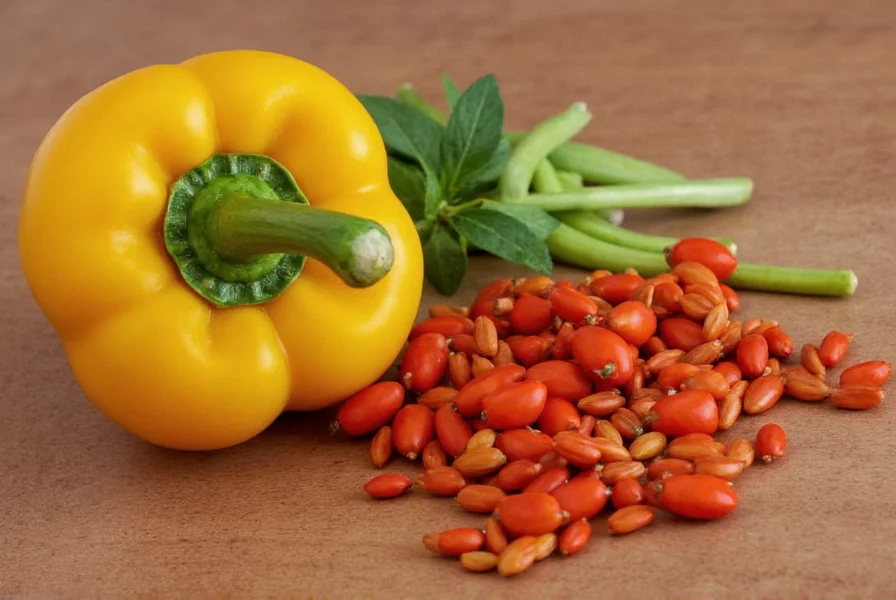Understanding the relationship between peppers and their seeds is essential for gardeners looking to cultivate these versatile plants. Peppers belong to the Capsicum genus, with Capsicum annuum being the most common species that includes bell peppers, jalapeños, and many other varieties. The seeds play a crucial role in the plant's reproductive cycle and can be used to grow identical plants when saved correctly.
The Biology of Pepper Seeds
Pepper seeds form inside the fruit after successful pollination occurs. Unlike some fruits where seeds indicate ripeness, peppers can be harvested at various stages while still producing viable seeds. The seed development process begins shortly after flowering:
- Pepper flowers must be pollinated to produce fruit containing seeds
- Seeds mature as the pepper fruit develops
- Full seed maturity typically occurs when peppers reach their final color stage
- Each pepper can contain 20-50+ seeds depending on variety and growing conditions
| Pepper Type | Average Seed Count | Seed Viability Duration |
|---|---|---|
| Bell Peppers | 25-40 | 2-3 years |
| Jalapeños | 30-50 | 3-4 years |
| Habaneros | 20-35 | 4+ years |
| Cayenne | 40-60 | 3-5 years |
Harvesting and Saving Pepper Seeds
Proper seed collection techniques significantly impact germination success rates. For gardeners interested in how to save pepper seeds for planting, follow these science-backed methods:
Choose fully mature peppers that have reached their final color stage—whether red, yellow, orange, or purple depending on variety. Ripe peppers contain the most developed seeds with highest viability. Cut the pepper open carefully and remove seeds from the central core. Gently scrape off any remaining fruit pulp, as this can promote mold during drying.
Spread seeds in a single layer on paper towel or wax paper in a well-ventilated area away from direct sunlight. Stir seeds daily to ensure even drying. Complete drying typically takes 1-2 weeks. Properly dried seeds should be brittle and snap when bent.

Pepper Seed Germination Process
Understanding pepper seed germination time helps gardeners plan their planting schedule effectively. Pepper seeds generally require:
- Soil temperature of 75-85°F (24-29°C) for optimal germination
- 7-21 days for sprouting depending on pepper variety
- Consistent moisture without waterlogging
- 12-16 hours of light daily after sprouting
Hotter pepper varieties often have longer germination periods than sweet peppers. For example, habanero seeds may take 14-21 days while bell peppers typically sprout within 7-14 days under ideal conditions. Pre-soaking seeds in room temperature water for 24 hours can improve germination rates for difficult varieties.
Differences Between Pepper Varieties' Seeds
While all pepper seeds share basic characteristics, there are notable differences between sweet and hot pepper seeds. Understanding the difference between sweet pepper seeds and hot pepper seeds helps gardeners manage expectations:
Sweet pepper seeds (bell peppers, pimentos) tend to be larger and lighter in color, often cream or pale yellow when mature. Hot pepper seeds are typically smaller and darker, ranging from light tan to deep brown. However, seed appearance alone cannot reliably predict heat level, as capsaicin (the compound that creates heat) develops in the fruit's placenta, not the seeds themselves.
Contrary to popular belief, removing seeds from hot peppers doesn't significantly reduce heat, as most capsaicin is concentrated in the white membranes surrounding the seeds. The seeds themselves contain minimal capsaicin but can absorb some from contact with these membranes.
Common Pepper Seed Problems and Solutions
Gardeners often encounter challenges with pepper seed germination problems. Here are frequent issues and evidence-based solutions:
- Slow or no germination: Increase soil temperature using a heat mat; ensure consistent moisture
- Damping off disease: Use sterile seed starting mix; improve air circulation; avoid overwatering
- Weak seedlings: Provide adequate light (14-16 hours daily); avoid overcrowding
- Poor seed viability: Test older seeds for viability; store seeds properly in cool, dark, dry conditions

Best Practices for Growing Peppers from Seeds
For those seeking best practices for growing peppers from seeds, timing and technique are crucial. Start seeds 8-10 weeks before your last expected frost date. Use seed starting trays with individual cells to minimize root disturbance during transplanting.
Peppers prefer slightly acidic soil with pH between 6.0-6.8. When transplanting seedlings to the garden, wait until soil temperatures consistently exceed 65°F (18°C) and nighttime temperatures stay above 55°F (13°C). Harden off seedlings gradually over 7-10 days before permanent transplanting.
For optimal results, consider these advanced techniques:
- Use bottom heat during germination (75-85°F/24-29°C)
- Apply diluted seaweed extract to boost seedling vigor
- Provide consistent moisture without waterlogging
- Rotate crops annually to prevent soil-borne diseases
Proper Pepper Seed Storage Methods
Understanding effective pepper seed storage methods ensures viability for future planting seasons. After seeds are completely dry:
- Store in airtight containers with desiccant packets
- Keep in cool, dark location (ideal temperature: 32-41°F/0-5°C)
- Label containers with variety and harvest date
- Test viability annually by germinating sample seeds
Properly stored pepper seeds maintain good germination rates for 2-5 years depending on variety. For longest viability, store seeds in the refrigerator or freezer in moisture-proof containers. Allow containers to reach room temperature before opening to prevent condensation.
Conclusion
Pepper seeds represent nature's perfect packaging for plant reproduction, containing all necessary genetic information to grow new plants. By understanding the biology of pepper seeds and implementing proper harvesting, storage, and germination techniques, gardeners can successfully propagate their favorite varieties year after year. Whether you're growing sweet bell peppers for salads or fiery habaneros for sauces, mastering pepper and seed relationships enhances your gardening success and preserves heirloom varieties for future seasons.











 浙公网安备
33010002000092号
浙公网安备
33010002000092号 浙B2-20120091-4
浙B2-20120091-4